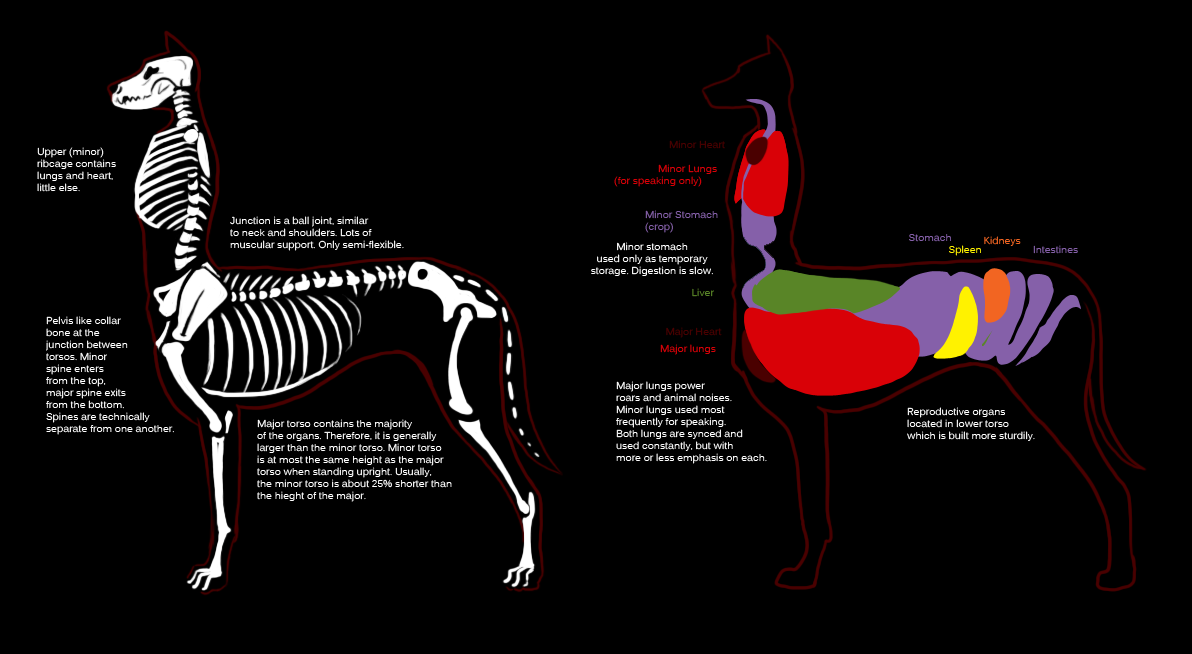
My attempt to make sense of the sometimes confusing anatomy of taurs, which I am a huge fan of. There seems to be a lot of confusion in the general public, but idk, I always found them pretty simple and easy to believe. Just awkward. Once you realize that the upper torso is generally empty/non-vital, it seems easier to grasp.
I've seen other adaptations though. Not trying to say this is the ONLY way for taurs to be. I've seen a version where there is only one set of each organ (one set of lungs, one heart, one stomach and so on) dispersed throughout the entire body. But taurs are large creatures and I find it difficult to believe that one small set of lungs and one tiny heart could power the entire creature. But, then I think of giraffes... so maybe it's possible.
I personally prefer the two hearts-two lungs system better. In my mind, both sets of lungs and both hearts are in perfect sync. Think of it like a set of pipes with two pumps. If one heart or one of the lung sets fails, the other can take over, which allows taurs to survive injuries that would be fatal to normal anthros. But this would be very situational. For example, a heart attack would not bother a taur as much as a normal anthro. But... idk, an electrical shock or something that disrupted the sync between the two hearts (which a heart attack could do, depending on its severity) would probably kill them, and it would be harder to revive them from heart failure as both hearts would need to be stimulated and synced up again. I assume its a hormonal thing, and one could assume that modern medicine would provide some sort of... hormonal injection that could assist in this process.
I also tried to explain away the idea that the taur spine is bent at 90 degrees. personally, that never bothered me. Humans can hold their heads at almost 90 degree angles to their shoulders, so it's not like the movement is impossible for the spine to do, as long as the muscular support is there. Plus, because the lumbar region of the spine curves outward before entering the lower torso, it's more a long sweep rather than a sharp angle, if you draw it perfectly anatomically (which I didn't but you understand what I'm saying x3 look at human skeletons for reference if you must. Also the skeletons of giraffes do this as well with their necks being held at a 90 degree angle to their spines in the most upright position). But, despite all of that, I still feel like the junction between torsos would have some sort of connector- it wouldn't be just straight spine with nothing to support it. Our necks have collarbones, our legs have the pelvis. It only make sense the taurs would have something as well to which muscles would be anchored.
Once you take that into account, there's no reason to assume that the spine would be intact at this junction. I called it a ball joint, but that's probably not accurate. x3 I think of it like the joint at our necks, which allows forward, sideways, and twisting movement. The area would likely be heavily reinforced with muscle and support, but since the upper torso is largely void of the heavy digestive organs, it wouldn't take that much natural strength/power to hold that area upright anyway. The large, weighted lower torso would bear most of the taur's overall mass, particularly in the major lumbar region, which acts as counterbalance for the weight of the upper torso to keep the taur from toppling forward.
By that logic though, taur species would have to be limited to four-legged, evenly balanced creatures such as horses, cats, and dogs. A bird taur (which I have seen some of, for some reason) would not have the necessary number of limbs to properly balance and support itself. A kangaroo might, with the long tail, but then organ distribution becomes a problem due to their small chests... but one could possibly assume that a kangaroo taur would simply evolve to have more quad-like anatomy that would differ substantially from a normal feral kangaroo.
Anyway, that's my idea. Still trying to convince people on my forum that taurs would be cool. x3 They unfortunately voted against them recently. Which I don't mean to keep bringing up to you guys. I'm sorry if I'm being annoying. I was just thinking about it today in the hour I had before bedtime. Decided to doodle this up, since no one anywhere seems to have any idea what goes on in the body of a taur. As the daughter of a doctor with a love of biology, I thought I could shed some light and give some possible ideas and things. That's all.
And it just so happens that I would still like to roleplay one. B3
I've seen other adaptations though. Not trying to say this is the ONLY way for taurs to be. I've seen a version where there is only one set of each organ (one set of lungs, one heart, one stomach and so on) dispersed throughout the entire body. But taurs are large creatures and I find it difficult to believe that one small set of lungs and one tiny heart could power the entire creature. But, then I think of giraffes... so maybe it's possible.
I personally prefer the two hearts-two lungs system better. In my mind, both sets of lungs and both hearts are in perfect sync. Think of it like a set of pipes with two pumps. If one heart or one of the lung sets fails, the other can take over, which allows taurs to survive injuries that would be fatal to normal anthros. But this would be very situational. For example, a heart attack would not bother a taur as much as a normal anthro. But... idk, an electrical shock or something that disrupted the sync between the two hearts (which a heart attack could do, depending on its severity) would probably kill them, and it would be harder to revive them from heart failure as both hearts would need to be stimulated and synced up again. I assume its a hormonal thing, and one could assume that modern medicine would provide some sort of... hormonal injection that could assist in this process.
I also tried to explain away the idea that the taur spine is bent at 90 degrees. personally, that never bothered me. Humans can hold their heads at almost 90 degree angles to their shoulders, so it's not like the movement is impossible for the spine to do, as long as the muscular support is there. Plus, because the lumbar region of the spine curves outward before entering the lower torso, it's more a long sweep rather than a sharp angle, if you draw it perfectly anatomically (which I didn't but you understand what I'm saying x3 look at human skeletons for reference if you must. Also the skeletons of giraffes do this as well with their necks being held at a 90 degree angle to their spines in the most upright position). But, despite all of that, I still feel like the junction between torsos would have some sort of connector- it wouldn't be just straight spine with nothing to support it. Our necks have collarbones, our legs have the pelvis. It only make sense the taurs would have something as well to which muscles would be anchored.
Once you take that into account, there's no reason to assume that the spine would be intact at this junction. I called it a ball joint, but that's probably not accurate. x3 I think of it like the joint at our necks, which allows forward, sideways, and twisting movement. The area would likely be heavily reinforced with muscle and support, but since the upper torso is largely void of the heavy digestive organs, it wouldn't take that much natural strength/power to hold that area upright anyway. The large, weighted lower torso would bear most of the taur's overall mass, particularly in the major lumbar region, which acts as counterbalance for the weight of the upper torso to keep the taur from toppling forward.
By that logic though, taur species would have to be limited to four-legged, evenly balanced creatures such as horses, cats, and dogs. A bird taur (which I have seen some of, for some reason) would not have the necessary number of limbs to properly balance and support itself. A kangaroo might, with the long tail, but then organ distribution becomes a problem due to their small chests... but one could possibly assume that a kangaroo taur would simply evolve to have more quad-like anatomy that would differ substantially from a normal feral kangaroo.
Anyway, that's my idea. Still trying to convince people on my forum that taurs would be cool. x3 They unfortunately voted against them recently. Which I don't mean to keep bringing up to you guys. I'm sorry if I'm being annoying. I was just thinking about it today in the hour I had before bedtime. Decided to doodle this up, since no one anywhere seems to have any idea what goes on in the body of a taur. As the daughter of a doctor with a love of biology, I thought I could shed some light and give some possible ideas and things. That's all.
And it just so happens that I would still like to roleplay one. B3
Category All / All
Species Unspecified / Any
Gender Any
Size 1192 x 654px
File Size 165.7 kB
You've already touched on it yourself but synchronization is one of the big issues with having two hearts at two different places in an organism. Heart rate itsself is controlled neurologically though hormones like adrenaline can boost your heartrate but that's fairly crude and it takes minutes for the heart to slow down. Also, while running both hearts in sync is neccescary it isn't always practical, larger hearts in larger bodies pump comparatively slower to smaller hearts and different parts of a taur's body would be exposing itsself to different levels of exhertion, the lower heart would have to pump fast while the taur is running and in order to stay in sync the upper heart would have to follow, subjecting the upper body to much higher bloodpressures than it really needs. While imperfect sync is not immediately lethal both hearts will have to work much harder to keep up blood pressure.
In the long run two hearts have to work harder and are less reliable than a single larger heart.
Getting a single heart/lung system to work is all about scaling, you'll have to curb the size of the lower body considerably, but not as much as you'd think. You'll want to put the heart and lungs in the upper body, the heart and lungs don't work well seperated from each other, and neither does the human brain. The digestive system resides in the lower body, further away from the heart and lungs but it is much more tolerant of lower blood pressures. A nice side effect to this seperation is that now the heart and lungs can be much larger and the diaphram, unobstructed by digestive organs, can expand much further.
As for the proportions, I ran the numbers on that a while ago, I will see if I can find them again or redo the calculations but such a taur with an upper body ( I refer to that as the "Torso" and the lower body as the "Barrel" ) the same size as a regular human would be much shorter because of the comparatively short quadruped legs.
As for a dirty example of what those proportions would approximately look like: http://dl.dropbox.com/u/3579841/tau.....ropexample.jpg a sketch done by a friend. Also note how the torso leans out past the forelegs, this is a little detail I added to accomodate the curvature of the spine.
In the long run two hearts have to work harder and are less reliable than a single larger heart.
Getting a single heart/lung system to work is all about scaling, you'll have to curb the size of the lower body considerably, but not as much as you'd think. You'll want to put the heart and lungs in the upper body, the heart and lungs don't work well seperated from each other, and neither does the human brain. The digestive system resides in the lower body, further away from the heart and lungs but it is much more tolerant of lower blood pressures. A nice side effect to this seperation is that now the heart and lungs can be much larger and the diaphram, unobstructed by digestive organs, can expand much further.
As for the proportions, I ran the numbers on that a while ago, I will see if I can find them again or redo the calculations but such a taur with an upper body ( I refer to that as the "Torso" and the lower body as the "Barrel" ) the same size as a regular human would be much shorter because of the comparatively short quadruped legs.
As for a dirty example of what those proportions would approximately look like: http://dl.dropbox.com/u/3579841/tau.....ropexample.jpg a sketch done by a friend. Also note how the torso leans out past the forelegs, this is a little detail I added to accomodate the curvature of the spine.
I like the idea of the more superior torso being a hollow cavity. would you think that the brain is still in the head too, and only the spinal chord is in the superior torso? man, you could have hit it big as a creature creator for movies like Narnia, surely, haha. I may use this as reference for any future taur images, if you dont mind.
These type of characters have always disturbed me.
I´m not going to say I like them, but what I like about his drawing is that you tried to make sense of something virtually impossible. And I like that, since I do that a lot in my writings.
Very good imagination, I love it! Proves that a simple explanation is better than coming up with a completely exagerated theory nonesense!
I´m not going to say I like them, but what I like about his drawing is that you tried to make sense of something virtually impossible. And I like that, since I do that a lot in my writings.
Very good imagination, I love it! Proves that a simple explanation is better than coming up with a completely exagerated theory nonesense!
Very interesting design. I would say that I have to agree with how you did this, although I possibly would have put a little more organs up top, possibly pyseudo-guts for filler. Or something of that nature.. but then again it could just be packed with muscle that you don't see in this rendering.
Either way, top notch! Love it.
Either way, top notch! Love it.
Well the way I consider it is that a normal anthro/humanoid figure's legs should be at minimum the same length, if not a little longer, than the length of their head and torso region. The waist should be the height's halfway point. I don't imagine this is any different for taurs.
Well I meant stomach liver etc. Yeah a taur that is 5' 6" has same height of the pelvis as a biped that is 5' 6" depending on the type of the comparisoned bodies. For example a Chakat is normally around 5' -5' 8" high head (W/O ears) to foreleg handpaw pads. Add 2" - 4" and you have spine and head with out ears. On a Chakat tail ranges from 4' at the age of 20 while hir tail grows to 7' at best at age of 135.
Ill be more describing once I can get to a comp. Is on a phone nows.
Ill be more describing once I can get to a comp. Is on a phone nows.
I've been thinking about taur anatomy, and I was imagining that there would be some sort of hindbrain in the lower body, to help coordinate movement there. I mean, we're looking at a creature that effectively has two bodies, meaning there's twice as much work for the main brain to do. Of course, there's no reason that the hindbrain would be capable of higher thinking in the same way the forebrain would; it would just be there for assistance, like a secondary processor in a computer. Plus, this solves the mystery of how the nervous system can easily transition from one segment of the body from another, given the awkward bending of the spine.

 FA+
FA+
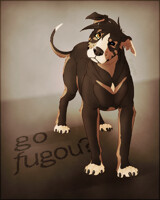


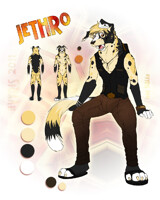
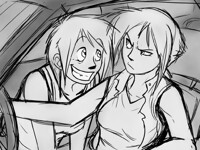
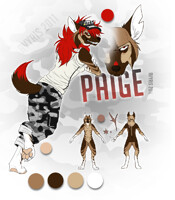







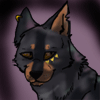




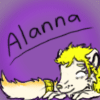


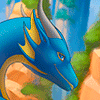









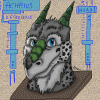

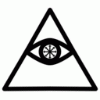












Comments